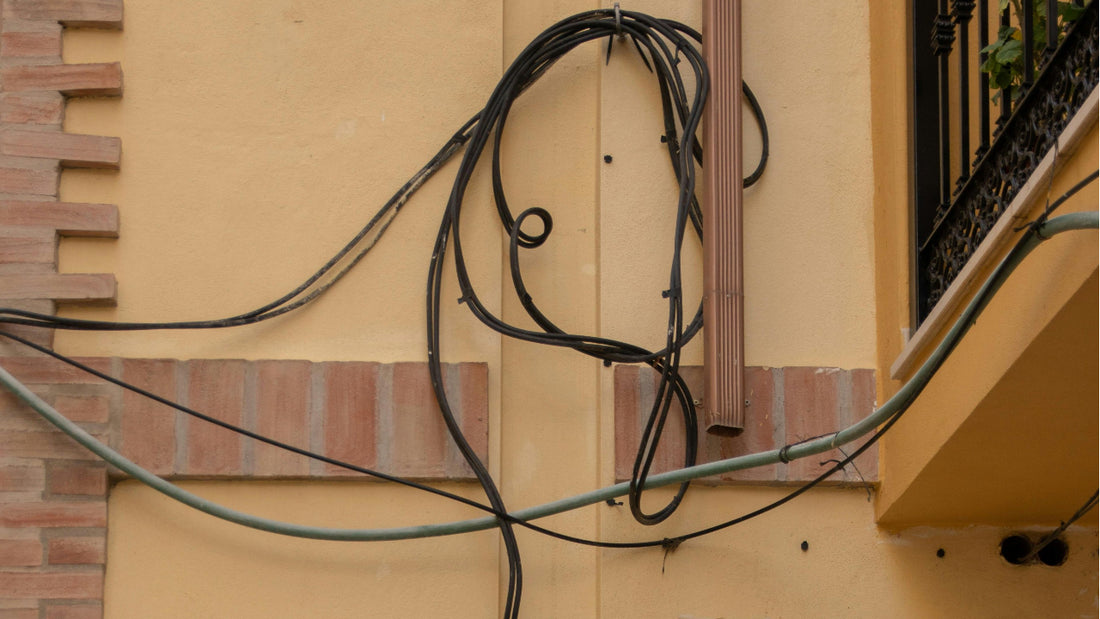
How Wire Gauge Affects Heat Dissipation
Share
Introduction
Wire gauge is a fundamental aspect of electrical wiring, influencing both the safety and efficiency of electrical systems. In industrial, commercial, and residential applications, selecting the correct wire gauge ensures that electrical circuits can handle the necessary load without overheating. The relationship between wire gauge and heat dissipation is crucial, as it directly impacts the longevity of wiring, energy efficiency, and overall safety. In this blog, we'll explore how wire gauge affects heat dissipation, the risks associated with improper wire selection, and best practices for choosing the right gauge to optimize heat management in electrical systems.

The Science Behind Wire Gauge and Heat Dissipation
Wire gauge refers to the diameter of an electrical wire, with smaller numbers indicating thicker wires and larger numbers denoting thinner wires. The thickness of the wire determines its ability to carry electrical current. Thicker wires have a lower resistance to the flow of electricity, which means they can carry more current with less heat generation. Conversely, thinner wires have higher resistance, leading to more heat being produced as current flows through them.
When electrical current passes through a wire, resistance converts some of the electrical energy into heat. This process is normal, but if the wire is too thin (i.e., has a higher gauge number), the amount of heat generated can exceed the wire's ability to dissipate it safely. Over time, excessive heat can degrade the wire's insulation, leading to short circuits, electrical fires, or damage to connected equipment.

Heat Buildup and Its Consequences
Overheating and Insulation Damage: One of the most significant risks of using an incorrect wire gauge is overheating. When a wire generates more heat than it can dissipate, the temperature of the wire rises. Prolonged exposure to high temperatures can cause the wire's insulation to break down, increasing the risk of electrical shorts and fires. Insulation is critical in preventing accidental contact between wires and other conductive materials, so any compromise in its integrity poses a serious safety hazard.
Voltage Drop and Energy Efficiency: Another consequence of using an improperly gauged wire is voltage drop. Voltage drop occurs when the electrical potential decreases as it travels along the wire due to resistance. Thinner wires with higher resistance are more prone to voltage drops, which can reduce the efficiency of electrical systems. In industrial settings, where large amounts of power are distributed over long distances, even small voltage drops can lead to significant energy losses and reduced performance of machinery and equipment.
Impact on Equipment Performance: Using the wrong wire gauge can also negatively impact the performance of connected devices and equipment. Electrical motors, for instance, may not receive enough voltage to operate at full capacity if there is a significant voltage drop. This can lead to inefficient operation, increased wear and tear, and a shorter lifespan for the equipment. In some cases, the equipment may even fail to operate altogether if the voltage drop is too severe.

Choosing the Right Wire Gauge to Optimize Heat Dissipation
Assessing Current Requirements: The first step in selecting the appropriate wire gauge is determining the current requirements of the circuit. This involves calculating the total amperage that the wire will need to carry. As a general rule, the higher the current, the thicker the wire should be. For example, a 16 GA wire generally handles up to 10 amps, a 14 GA wire is typically rated for 15 amps, a 12 GA wire can handle 20 amps, and a 10 GA wire is suitable for 30 amps. It's essential to consult wiring charts or a licensed electrician to ensure the selected wire gauge matches the circuit's demands, helping to prevent overheating and ensuring the safety and efficiency of your electrical system.
Considering Distance and Voltage Drop: In addition to current requirements, the distance that the wire will run also affects the choice of wire gauge. Longer distances increase the potential for voltage drop, which can lead to heat buildup in the wire. To compensate for this, a thicker wire gauge may be necessary for longer runs. For instance, if you’re wiring a circuit over 100 feet long, you might need to use a thicker gauge than you would for a shorter run to ensure minimal voltage drop and efficient heat dissipation.
Environmental Factors and Heat Management: Environmental conditions can also influence the choice of wire gauge. In environments with high ambient temperatures or where wires are bundled together in conduits, heat dissipation becomes more challenging. In such cases, it may be necessary to use a thicker wire gauge to prevent overheating. Additionally, choosing wires with higher temperature ratings can help ensure safe operation in extreme conditions.
Consulting Industry Standards and Regulations: Industry standards and regulations, such as those set by the National Electrical Code (NEC), provide guidelines for selecting the appropriate wire gauge for different applications. These guidelines take into account factors such as current capacity, wire length, and environmental conditions. Adhering to these standards is essential for ensuring the safety and compliance of your electrical system.

Conclusion
Understanding how wire gauge affects heat dissipation is crucial for designing and maintaining safe and efficient electrical systems. Selecting the correct wire gauge minimizes the risk of overheating, voltage drop, and equipment damage, ensuring that your electrical circuits can handle the required load without compromising safety. Whether you’re working on a small residential project or a large industrial installation, taking the time to choose the right wire gauge will pay off in improved performance, energy efficiency, and peace of mind. By considering factors such as current requirements, distance, environmental conditions, and industry standards, you can make informed decisions about wire gauge selection and optimize heat management in your electrical systems.








